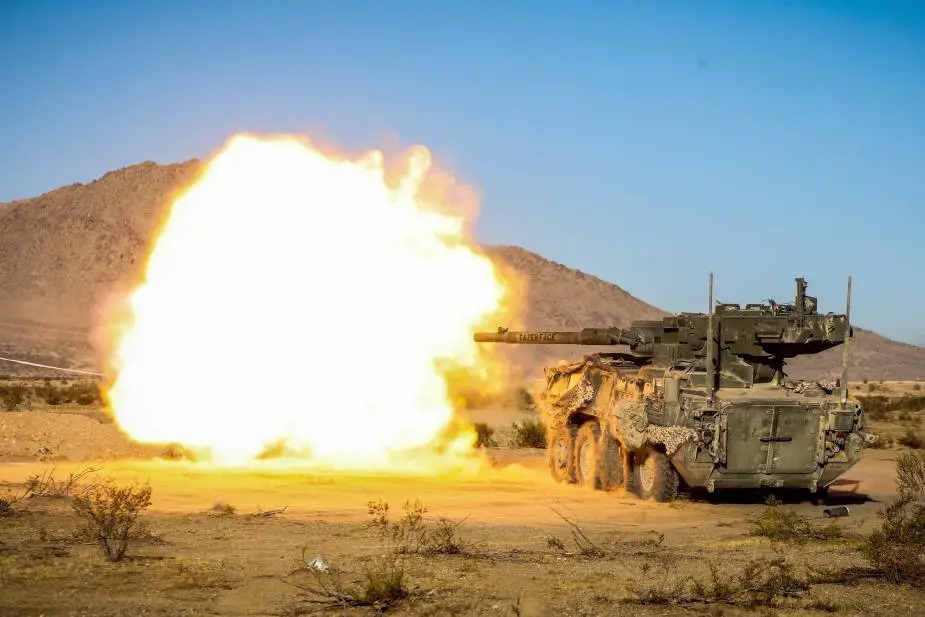European Defence Agency questions about future military scenarios as evolution or revolution
Throughout 2021, the European Defence Agency (EDA) held a Technology Foresight Exercise the results of which will help identify and define the main challenges Europe’s armed forces will most probably have to face in the next 20 years and beyond, as well as the defence toolbox needed to tackle them.
Follow Army Recognition on Google News at this link

What will future battlefields look like? (Picture source: US DoD)
In the short term, the exercise outcome will feed into the upcoming revision of the EU’s Capability Development Plan (CDP) to be steered by EDA. It will also serve for future updates of EDA’s Overarching Strategic Research Agenda (OSRA) and the Key Strategic Activities (KSA).
The methodology applied and the activities developed were designed to support the central objective of the foresight exercise: the identification of new technologies, weak signals and innovative trends to support the R&T and capability planning processes and inform future defence policies and programmes of the EU and its Member States. To achieve that, the exercise looked up to 20 years into the future, to provide a strategic vision of the possible impact those new technologies will have on defence in 2040 and beyond. The exercise was based on a methodology that combines different existing methods and processes along with best practices and lessons learned from the wider EDA community of foresight practitioners.
10 future scenarios identified
The exercise stretched over 2021 with successive activities and meetings that brought together representatives from different international organisations, ministries of Defence, non-governmental bodies, academia, industry and civil society. With the help a multidisciplinary group of foresight experts, so-called Futures Tellers, multiple possible futures were described in the Futures Narratives meant to widen people’s vision and imagination and to encourage them to think outside the box about what could be possible towards 2040+, and what kind of challenges this would entail. Based on these narratives, the experts then entered a complex thinking and discussion process (Divergent Thinking, Convergent Thinking) from which, at the end, emerged 10 future scenarios, i.e. developments which, according to the experts, are very likely to materialise over the next 20 years in Europe – all of them somehow relevant for defence:
• Software-based battlefields: a scenario where software and algorithms will determine military missions’ success more than platforms, as the result of disruptive developments and the introduction of Artificial Intelligence (AI), faster communication networks and system-of-systems defence solutions
• Space as an operational military domain: by 2040, all global powers will have a fully established space force resulting in opportunities but also in threats and challenges. This scenario will call for the establishment of new concept of operations, regulatory frameworks and international agreements
• Extended and augmented reality everywhere, also in defence: the merger of brain-computer interfaces and augmented/virtual reality in the battlefield will lead to a pervasive robotisation of the battlefield and the rise of (mis-)information-driven capabilities
• Dominance of unmanned and autonomous platforms on the battlefield: in 2040, the extensive integration of unmanned platforms in the military domain will trigger major changes to the structure and organisation of Defence Ministries, particularly as regards military operational doctrine, equipment, acquisition policy and logistics implications
• Hybrid human-machine teaming, also in the military: by 2040, there will be a seamless integration and cooperation between humans and machines. This scenario deals with the consequences this development will have on technology, as well as ethical and regulatory frameworks
• Proliferation of more and more sophisticated biological weapons: by 2040, climate change, global migration and the rise of megacities will result in new diseases, natural catastrophes and new resistant microbes created by the widespread misuse of antibiotics and other drugs. New biohazard stemming from the use of synthetic biology and gene edition technologies will emerge, which may be used as a bioweapon or biothreat
• Enhanced cognitive abilities of soldiers (human enhancement): this scenario outlines the key impact advances in biotechnology, synthetic biology, gene edition technology and brain-computer interfaces will have on soldiers as those technologies can be used to enhance human being’s cognitive and physical capabilities
• Real time mapping of dynamic environments: by 2040, quantum sensing and quantum navigation will have made leaps ahead in the development resulting in real-time mapping capabilities of every changing environments. The consequence on the military capabilities are addressed in this scenario
• Use of misinformation: by 2040, the misuse of information will become a weapon targeting all information systems and enabling a scale of influencing operations challenging the capability of nation-states to counter or control. The boundaries between military and civilian domains will continue to blur
• Environmental problems, energy supply, climate change: by 2040, climate aspects and biodiversity will become geo-strategic drivers and subjects of conflicts and confrontations. Energy supply, too, will remain a major factor of strategic dominance. From a defence point of view, and despite the huge investments made in new energy generation and storage systems, energy will remain a critical challenge for most defence systems and operations.
The impact those 10 scenarios will likely have in the defence domain, and the types of adaptations they will require, were then analysed from different time perspectives, i.e. very short term (2024), medium term (2030) and long term (2040).
A final report with the exercise conclusions should be available by the end of March on the exercise website.


























